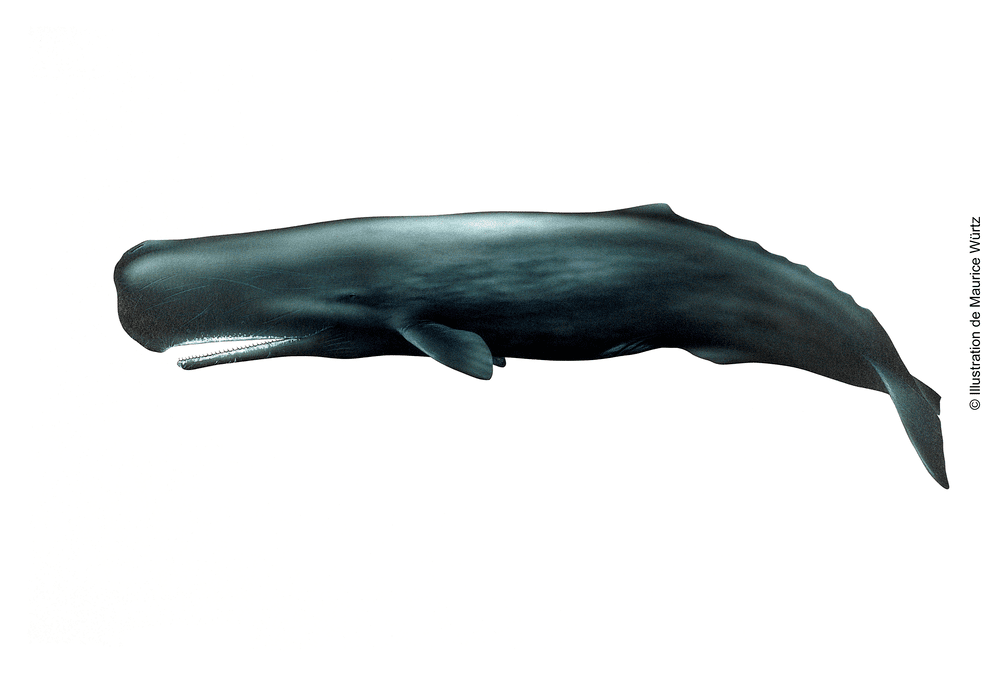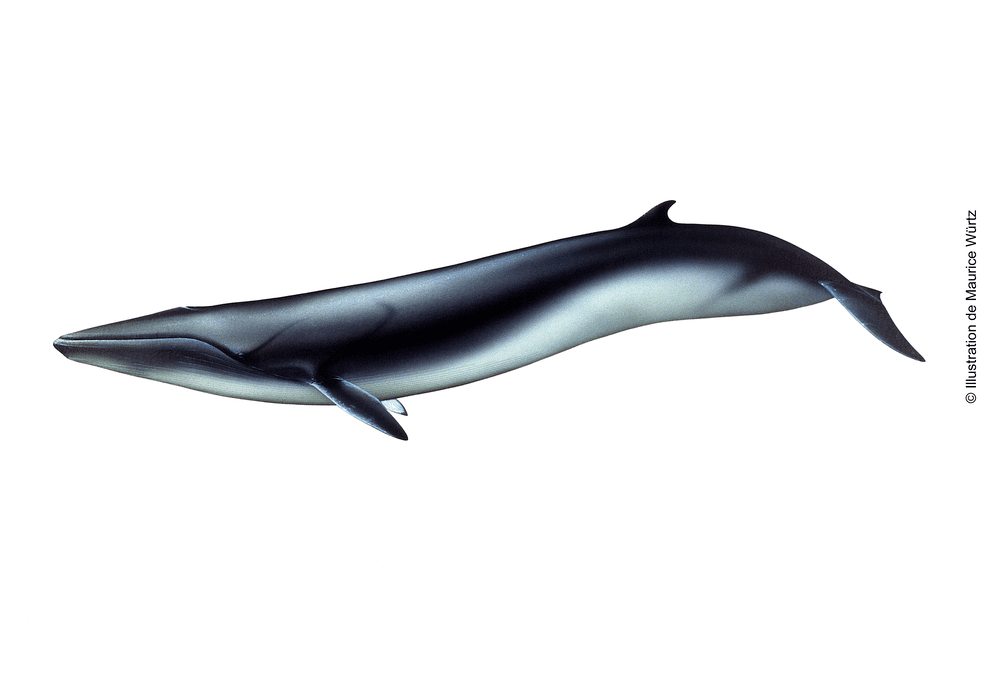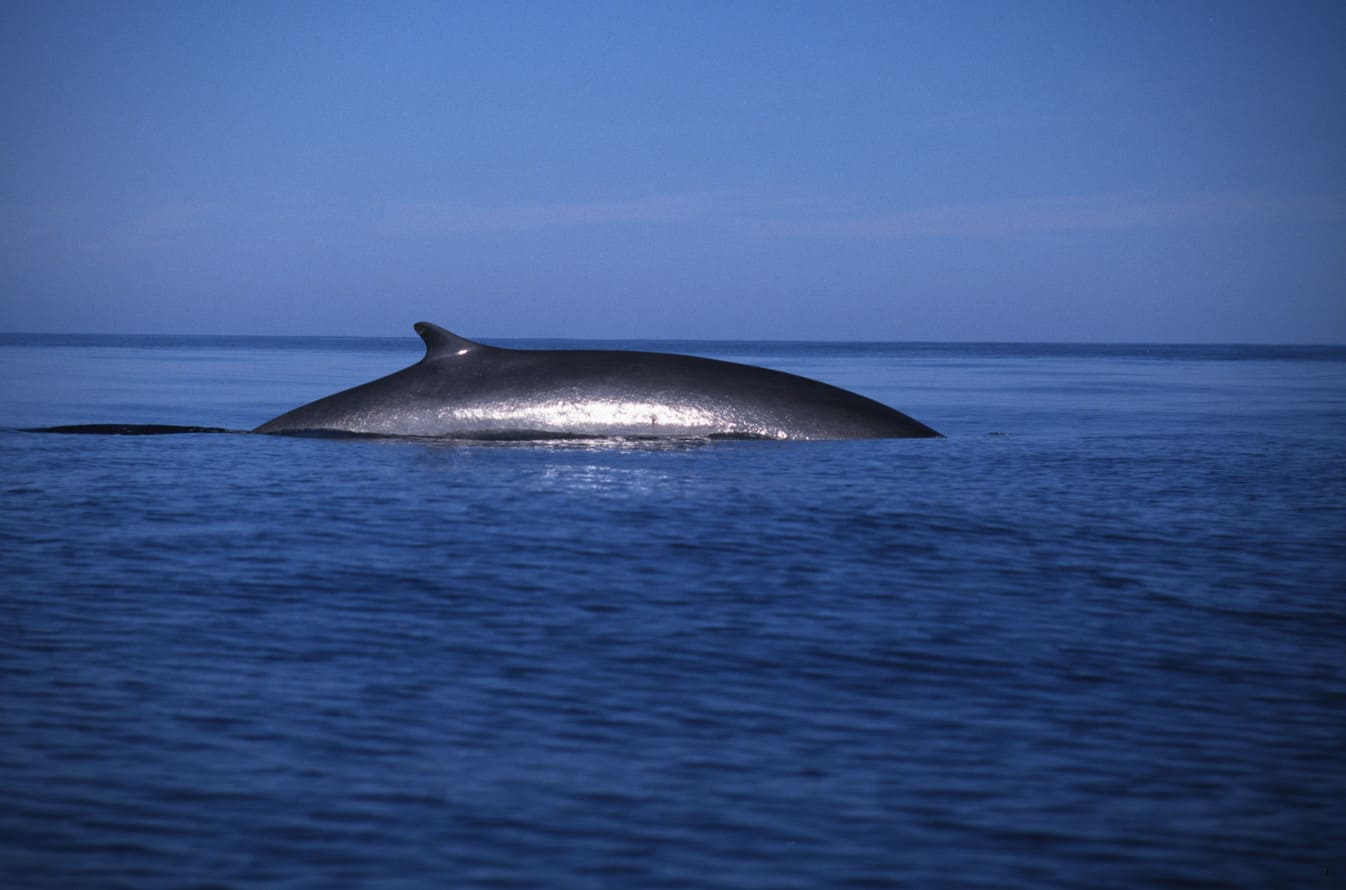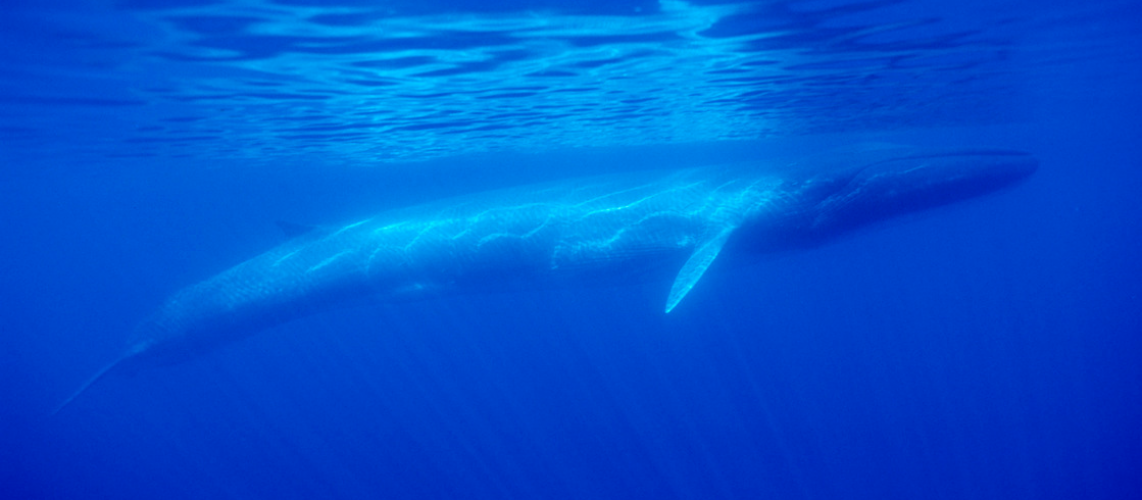The answer is yes! There are several thousand whales living in the waters of the Mediterranean. It is even not uncommon to see their breath from far away, on crossings to Corsica, for example. But beware: human activities are a source of disturbance for these giant mammals. It is therefore very important to do everything possible to preserve their peace of mind.
There are nearly twenty species of marine mammals in the Mediterranean, eight of which are considered common: sperm whales and fin whales, of course, but also dolphins (common, blue and white, Risso’s, bottlenose dolphin), pilot whales and ziphiuses. Other species are observed on a very occasional basis such as the minke whale, the killer whale, the humpback whale and very recently a young grey whale!

Sperm whale Physeter catodon
Baleen or teeth?
In common parlance, we tend to refer to all large cetaceans as “whales”. However, only “baleen whales” (mysticetes) are really whales.
The fin whale (up to 22 metres and 70 tonnes) is the main baleen whale in the Mediterranean.
It rubs shoulders with numerous “toothed cetaceans” (odontocetes), the largest of which is the sperm whale (up to 18 metres and 40 tonnes).
Despite its imposing stature, this whale is not strictly speaking a whale, and belongs to the same group as orcas, dolphins or pilot whales.
A giant of the seas
The fin whale is the second largest mammal in the world, just behind the blue whale!
Although it is still difficult to assess the exact size of its population (as individuals are constantly on the move and dive regularly), it is estimated that about a thousand individuals live in the protected area of the Pelagos Sanctuary, which aims to protect marine mammals in the western Mediterranean over a vast territory including French, Italian and Monegasque waters.
The fin whale feeds mainly on krill, small shrimp that it traps in its baleen plates in large quantities.

Fin whale Balaenoptera physalus
Risk of collision
Fin whales can live up to 80 years, if their trajectory does not meet that of the fast ships that are common in summer, which they find difficult to avoid when breathing on the surface.
As for sperm whales, collisions are a real danger and a proven risk of mortality. Hence the interest in developing techniques in partnership with shipping companies to inform ships of the presence of cetaceans in real time, to equip ships with detectors and thus prevent collisions with these large mammals.
Discover the different species of marine mammals in the Pelagos Sanctuary.








